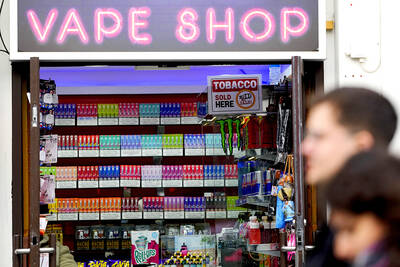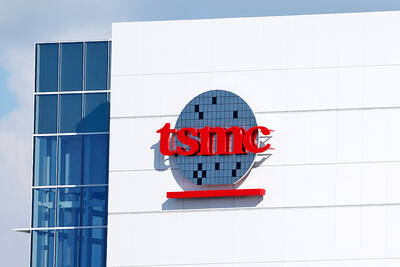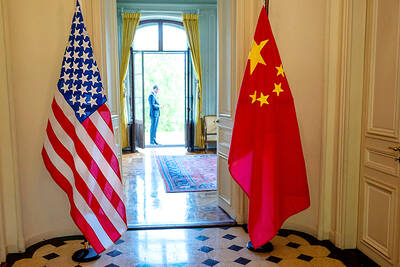Under fluorescent lights and a whirling ceiling fan that is no match for the Havana summer morning heat, Emiliano Nelson Guerra traced a pattern onto a bolt of pink cotton cloth and carefully scissored the edges.
Intermittently pulling on a fat cigar, he explained the significance of the guayabera, the roomy, collared, four-pocketed dress shirts that Cubans wear to look spiffy on this tropical island where neckties are practically extinct.
“The guayabera is nothing less than the typical Cuban garment,” Guerra said. “It’s our image, so you always have to try to make it look its best.”
Guerra, a 49-year-old with closely cropped hair and a receding hairline, is Cuba’s shirtmaker to the stars. Known as Nelson to his friends, he has spent the last two decades establishing himself as Cuba’s leading designer of the guayabera, which the government last year decreed the official formal attire for state functions.
He has also hand-crafted shirts for international luminaries from US singer Harry Belafonte and British pop star Sting to Venezuelan President Hugo Chavez and Prince Albert of Monaco. E’Nelson Collection designs have been exhibited in shows and fairs and been worn by world-renowned Cuban musicians like Chucho Valdes and the late Compay Segundo, of Buena Vista Social Club fame, and they’re also in demand by wealthy foreigners and well-heeled Cubans up to the highest levels of government.
“One time I even made a guayabera for ‘el comandante,’” Guerra said, referring to former Cuban president Fidel Castro, known for his affinity for military attire.
Guerra recalled the first time he met US actor Danny Glover, who has cultivated close ties to Cuba, about a decade ago at a film festival in Havana. He asked the Lethal Weapon star about the shirt he was wearing, which turned out to be an artesanal African garment. The shirtmaker soon found himself hurriedly assembling a bone-white, embroidered masterpiece that he gave to Glover the last night of the festival.
“He tried it out immediately,” Guerra said. “He took off the shirt he was wearing, put mine on and said: ‘Excellent.’”
A year later the actor was back in town without the guayabera.
“He wasn’t wearing it. Instead he told me: ‘I want another one,’” Guerra said, breaking into laughter at the memory. He said he has made three shirts so far for Glover.
Working under a Cuban law that lets artists and craftspeople operate independently, Guerra and his three assistants churn out 80 to 100 guayabera a month.
In a country where official monthly wages average around US$20, they sell in hotels and tourist shops for US$49 for a casual short-sleeve, and US$100 for a formal linen long-sleeve. He’s also taken custom orders up to US$229.
Still, like any artist, he’s disappointed he won’t get to see the finished product up on stage.
Guerra is currently crafting guayabera for Miami-based salsa musician Isaac Delgado, who’s been wearing E’Nelson Collection since the 1990s, for his new album cover and upcoming European tour. Guerra proudly held up a demo: white-fronted with the entire back a red, white and blue Cuban flag.
“He’s a tremendous designer with very good taste,” the singer’s wife and assistant Massiel -Delgado said.
Guerra founded his home workshop in historic Old Havana in the mid-1990s with 10 initial designs that have today swelled to more than 100.
Cardboard patterns and photos of him with Glover, Sting and Segundo adorn the walls of the cutting table room. In an adjacent space, a painting of a Madonna gazing down at three people at sea in a rowboat hangs over early-1900s Singer sewing machines.
Guerra said Cuban guayabera making fell into decline after the revolution in 1959, as some cuts of fine cloth were in shorter supply and tastes changed. An invasion of Mexican Yucatan-style guayabera, along with mass-production of shirts he called “barbarous,” meant that handmade Cuban shirts all but disappeared.
“There was a time when there wasn’t much talk about the guayabera. In fact, young people — and many of them still have this idea — thought the guayabera was for old, overweight men,” he said.
Guerra is on a mission to change that

Real estate agent and property developer JSL Construction & Development Co (愛山林) led the average compensation rankings among companies listed on the Taiwan Stock Exchange (TWSE) last year, while contract chipmaker Taiwan Semiconductor Manufacturing Co (TSMC, 台積電) finished 14th. JSL Construction paid its employees total average compensation of NT$4.78 million (US$159,701), down 13.5 percent from a year earlier, but still ahead of the most profitable listed tech giants, including TSMC, TWSE data showed. Last year, the average compensation (which includes salary, overtime, bonuses and allowances) paid by TSMC rose 21.6 percent to reach about NT$3.33 million, lifting its ranking by 10 notches

Popular vape brands such as Geek Bar might get more expensive in the US — if you can find them at all. Shipments of vapes from China to the US ground to a near halt last month from a year ago, official data showed, hit by US President Donald Trump’s tariffs and a crackdown on unauthorized e-cigarettes in the world’s biggest market for smoking alternatives. That includes Geek Bar, a brand of flavored vapes that is not authorized to sell in the US, but which had been widely available due to porous import controls. One retailer, who asked not to be named, because

SEASONAL WEAKNESS: The combined revenue of the top 10 foundries fell 5.4%, but rush orders and China’s subsidies partially offset slowing demand Taiwan Semiconductor Manufacturing Co (TSMC, 台積電) further solidified its dominance in the global wafer foundry business in the first quarter of this year, remaining far ahead of its closest rival, Samsung Electronics Co, TrendForce Corp (集邦科技) said yesterday. TSMC posted US$25.52 billion in sales in the January-to-March period, down 5 percent from the previous quarter, but its market share rose from 67.1 percent the previous quarter to 67.6 percent, TrendForce said in a report. While smartphone-related wafer shipments declined in the first quarter due to seasonal factors, solid demand for artificial intelligence (AI) and high-performance computing (HPC) devices and urgent TV-related orders

MINERAL DIPLOMACY: The Chinese commerce ministry said it approved applications for the export of rare earths in a move that could help ease US-China trade tensions Chinese Vice Premier He Lifeng (何立峰) is today to meet a US delegation for talks in the UK, Beijing announced on Saturday amid a fragile truce in the trade dispute between the two powers. He is to visit the UK from yesterday to Friday at the invitation of the British government, the Chinese Ministry of Foreign Affairs said in a statement. He and US representatives are to cochair the first meeting of the US-China economic and trade consultation mechanism, it said. US President Donald Trump on Friday announced that a new round of trade talks with China would start in London beginning today,